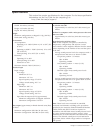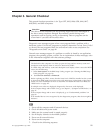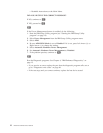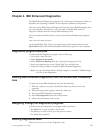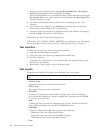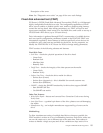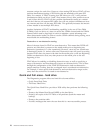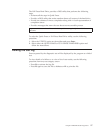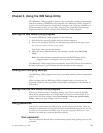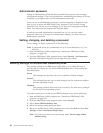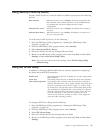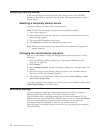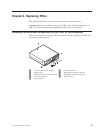structure unique for each drive. However, when testing IDE drives, FDAT will not
perform simultaneous testing of IDE drives that are attached to the same IDE
cable. For example, if FDAT is testing four IDE drives on a PC, it will perform
simultaneous testing on drives 1 and 3 first (master drives), then perform tests on
2 and 4 (slave drives). FDAT will also perform simultaneous testing on a master
and slave that are on separate IDE cables, but will not perform simultaneous tests
on a master and slave on the same IDE cable. This generally increases the amount
of time needed to test multiple IDE drives.
Another limitation of FDAT’S multitasking capability is the use of Ultra DMA
(UDMA). Only one drive at a time can access the UDMA channel and the UDMA
channel buffer must be kept high in order to maintain a speed advantage over
other data transfer modes. In order to use the UDMA channel during testing, users
must disable the multitasking feature.
Destructive vs non-destructive testing:
Most of the tests found in FDAT are non-destructive. This means that PCDR will
preserve any data that is present on the tested media prior to beginning any
destructive operations (i.e. write operations). However, users can run certain tests
in destructive mode (i.e. surface scan tests). Destructive tests will speed up testing
because FDAT does not preserve the data on the media prior to the test beginning.
Unlike non-destructive tests, any data present on the media prior to the test
beginning is lost.
FDAT allows for enabling or disabling destructive tests, as well as specifying a
range of destructive and non-destructive sectors on the tested drive. This is done
through the configuration of the FDAT.INI.If destructive and non-destructive
ranges somehow overlap, then the overlapped area is considered non-destructive.
For example, if users specify both destructive and non-destructive ranges as the
same, then the entire drive is tested as non-destructive.
Quick and Full erase - hard drive
The Diagnostics program offers two hard drive format utilities:
v Quick Erase Hard Drive
v Full Erase Hard Drive
The Quick Erase Hard Drive provides a DOS utility that performs the following
steps.
v Destroys the Master Boot Record (MBR) on the hard drive.
v Destroys all copies of the FAT Table on all partitions (both the master and
backup).
v Destroys the partition table.
v Provides messages that warn the user that this is a non-recoverable process.
16 Hardware Maintenance Manual




